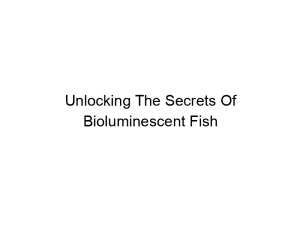Want a thriving underwater ecosystem that sparkles and delights? Keeping a fish tank isn’t just about filling it with water and fish; it’s a commitment to maintaining a clean and healthy environment. How to Keep Your Fish Tank Clean and Healthy involves a multifaceted approach, from regular water changes to proper filtration and mindful stocking. This comprehensive guide will walk you through everything you need to know, from beginner basics to advanced techniques, ensuring your aquatic friends live long, happy lives. You’ll learn about water parameters, cleaning schedules, preventative measures, and troubleshooting common issues. Let’s dive in!
A healthy aquarium is a balanced ecosystem. This delicate balance involves beneficial bacteria that break down fish waste (ammonia, nitrite, and nitrate), keeping your water safe. Disrupting this balance through neglect
or sudden changes can lead to ammonia spikes, which are lethal to fish. Understanding the nitrogen cycle is paramount to maintaining a healthy tank.
Key Water Parameters
Maintaining stable water parameters is crucial. This includes:
- Ammonia (NH3/NH4): Should be 0 ppm (parts per million).
- Nitrite (NO2): Should be 0 ppm.
- Nitrate (NO3): Should be below 40 ppm (regular water changes help manage this).
- pH: The ideal pH depends on your fish species; research the specific needs of your inhabitants.
- Temperature: Maintain the correct temperature for your fish using a reliable heater and thermometer.
- Dissolved Oxygen (DO): Ensure adequate oxygen levels through proper filtration and aeration.
Regular water testing with a reliable test kit is essential for monitoring these parameters.
Setting Up Your Aquarium for Success
Choosing the Right Tank Size
The size of your tank directly impacts its stability. Overstocking (having too many fish for the tank’s size) dramatically increases waste production, leading to water quality issues. Research the adult size of your fish and follow stocking guidelines carefully. A larger tank is generally easier to maintain a stable environment in.
Selecting Appropriate Filtration
A powerful and appropriate filter is the backbone of a clean aquarium. It removes solid waste, improves water clarity, and enhances oxygenation. Consider the size of your tank and the bioload (the total waste produced by your fish and other inhabitants) when selecting a filter. Regular filter maintenance is critical.
Substrate Selection: Gravel, Sand, or Something Else?
The substrate serves both aesthetic and functional purposes. While gravel is common, sand provides a more natural-looking environment and is often easier to clean. Consider the type of fish you have when choosing a substrate – some fish prefer to sift through sand, while others might get injured by sharp gravel.
Regular Aquarium Maintenance: A Step-by-Step Guide
Partial Water Changes: The Cornerstone of Cleanliness
Partial water changes are crucial for removing accumulated waste products and maintaining stable water parameters. Aim for 25-50% water changes weekly, depending on your tank size and bioload. Use a gravel vacuum to siphon out debris from the substrate during water changes.
Cleaning Your Aquarium Glass
Algae growth is common, especially on the glass. Use a magnetic algae scraper for effortless cleaning. Avoid harsh chemicals that could harm your fish.
Filter Maintenance: Essential for Water Quality
Regular filter maintenance is vital. Rinse filter media (sponges, cartridges) in old aquarium water (never tap water) to avoid killing beneficial bacteria. Replace filter cartridges as needed according to the manufacturer’s instructions.
Understanding and Preventing Common Aquarium Problems
Dealing with Algae Blooms
Algae blooms are a common problem in aquariums. They can be caused by excess light, nutrients, or poor water quality. Addressing these underlying causes is crucial. Regular water changes, appropriate lighting, and efficient filtration can minimize algae growth.
Identifying and Treating Fish Diseases
Regular observation of your fish is key to early detection of diseases. Quarantine new fish before introducing them to your main tank. If you suspect a disease, seek advice from an experienced aquarist or veterinarian.
Dealing with Ammonia, Nitrite, and Nitrate Spikes
Ammonia, nitrite, and nitrate spikes are harmful to fish. Regular water testing and immediate action are essential to prevent fish mortality. Large partial water changes are the first line of defense.
Advanced Aquarium Maintenance Techniques
Understanding the Nitrogen Cycle in Detail
The nitrogen cycle is a complex process involving beneficial bacteria that convert harmful waste products into less harmful forms. Understanding this cycle will help you maintain a stable and healthy environment for your fish.
Advanced Filtration Methods: Beyond the Standard Filter
Consider adding supplementary filtration methods, such as a protein skimmer (for larger tanks) or a refugium (a secondary tank for algae growth and nutrient export).
Water Parameter Control: Fine-tuning Your Ecosystem
Mastering water parameter control is key to advanced aquariums. This involves fine-tuning pH, temperature, and other parameters to create the ideal environment for your fish species.
Aquarium Lighting and Plant Care
Choosing the Right Aquarium Lighting
Aquarium lighting is vital for plant growth and overall tank aesthetics. Select appropriate lighting based on the types of plants and fish you have.
Planting Your Aquarium for a Thriving Ecosystem
Live plants play a crucial role in a healthy aquarium. They consume excess nutrients, provide shelter for fish, and add aesthetic value. Research suitable plants based on your tank conditions and fish species.
Aquarium Inhabitants: Fish Selection and Compatibility
Choosing Compatible Fish Species
Select fish species that are compatible in terms of size, temperament, and water requirements. Avoid overstocking, which can lead to stress and disease among your fish.
Introducing New Fish to Your Existing Aquarium
Acclimate new fish properly before introducing them to your established aquarium to minimize stress and prevent disease transmission.
Caring for Other Aquatic Life: Snails, Shrimp, and More
Many aquariums include other aquatic life forms besides fish. These invertebrates add diversity and help maintain tank cleanliness. Understand their specific care needs.
Maintaining a Clean and Healthy Aquarium on a Budget
DIY Aquarium Cleaning Supplies
Explore budget-friendly DIY solutions for cleaning your aquarium, such as using vinegar for algae removal or making your own filter media.
Saving Money on Aquarium Supplies
Research and comparison shop to find the best deals on essential aquarium equipment and supplies.
Frequently Asked Questions
What are the most common mistakes beginners make when setting up a fish tank?
Beginners often make mistakes such as overstocking, neglecting water changes, or using unsuitable equipment. Proper research and planning are vital for success.
How often should I clean my aquarium filter?
The frequency depends on the filter type and your tank’s bioload. Generally, rinsing filter media in old aquarium water weekly is sufficient. Cartridges should be replaced as needed, typically every few months.
What should I do if I notice a sudden spike in ammonia or nitrite?
Perform immediate large partial water changes (50% or more) and monitor the water parameters closely. This helps dilute the harmful substances.
What are the signs of a healthy aquarium?
A healthy aquarium exhibits clear water, active and healthy fish, and thriving plants (if present). Water parameters should be stable within the optimal range for your species.
What is the best way to remove algae from my aquarium glass?
A magnetic algae scraper is the most efficient and convenient tool for removing algae from the glass without harming your fish or plants.
How can I prevent algae growth in my aquarium?
Regular water changes, proper lighting, and efficient filtration help prevent algae blooms. Avoiding overfeeding also minimizes excess nutrients that fuel algae growth.
How do I know if my fish are stressed or unhealthy?
Signs of stress or illness include lethargy, loss of appetite, unusual swimming patterns, clamped fins, or visible lesions on the body.
Final Thoughts
Maintaining a clean and healthy fish tank is a rewarding experience. By following these guidelines and understanding the principles of aquarium husbandry, you can create a thriving underwater world that brings you years of enjoyment. Remember, consistency is key; regular maintenance and monitoring of water parameters are crucial for the long-term health and happiness of your aquatic companions. Don’t hesitate to seek advice from experienced aquarists or online communities if you encounter challenges. With dedication and the right knowledge, you can transform your aquarium into a beautiful and thriving ecosystem. Now go forth and create your underwater paradise!




